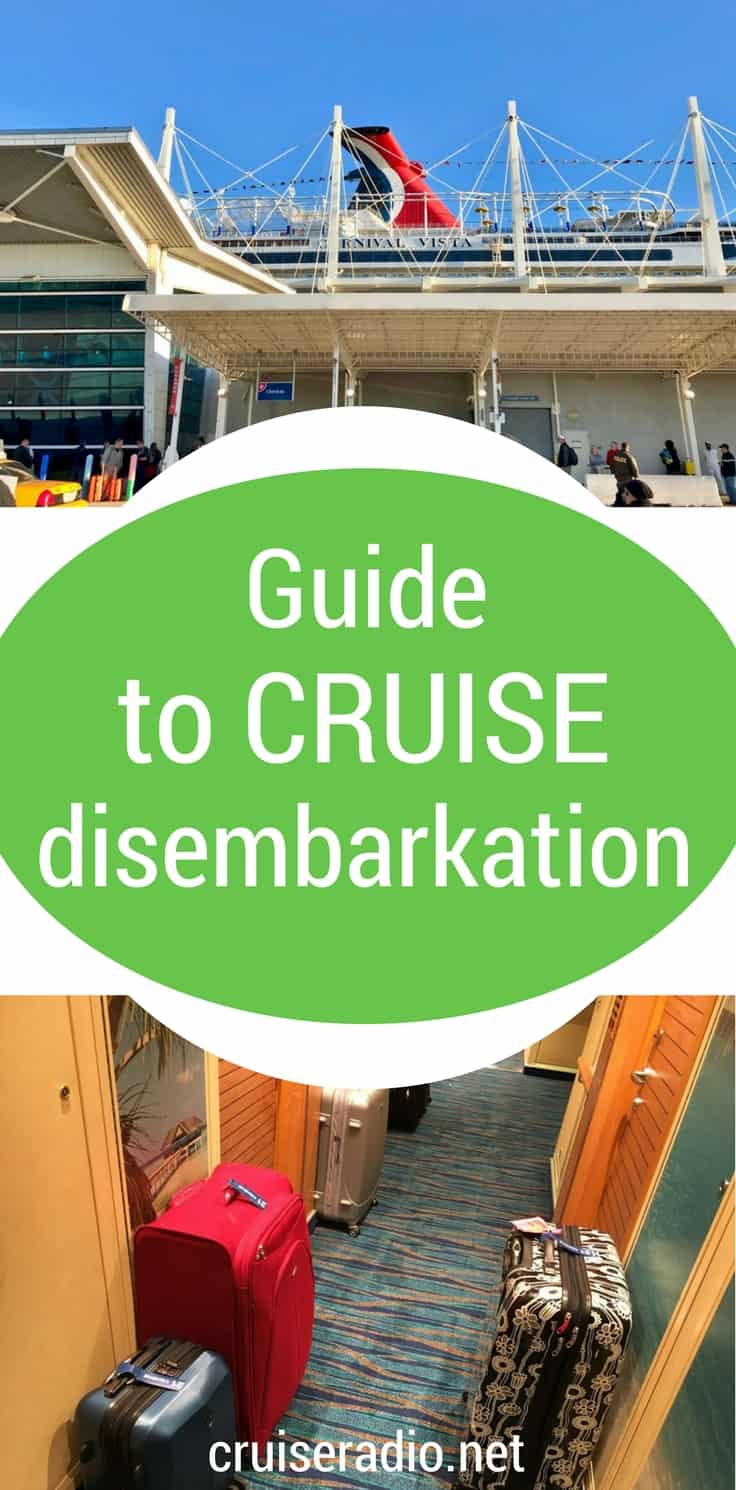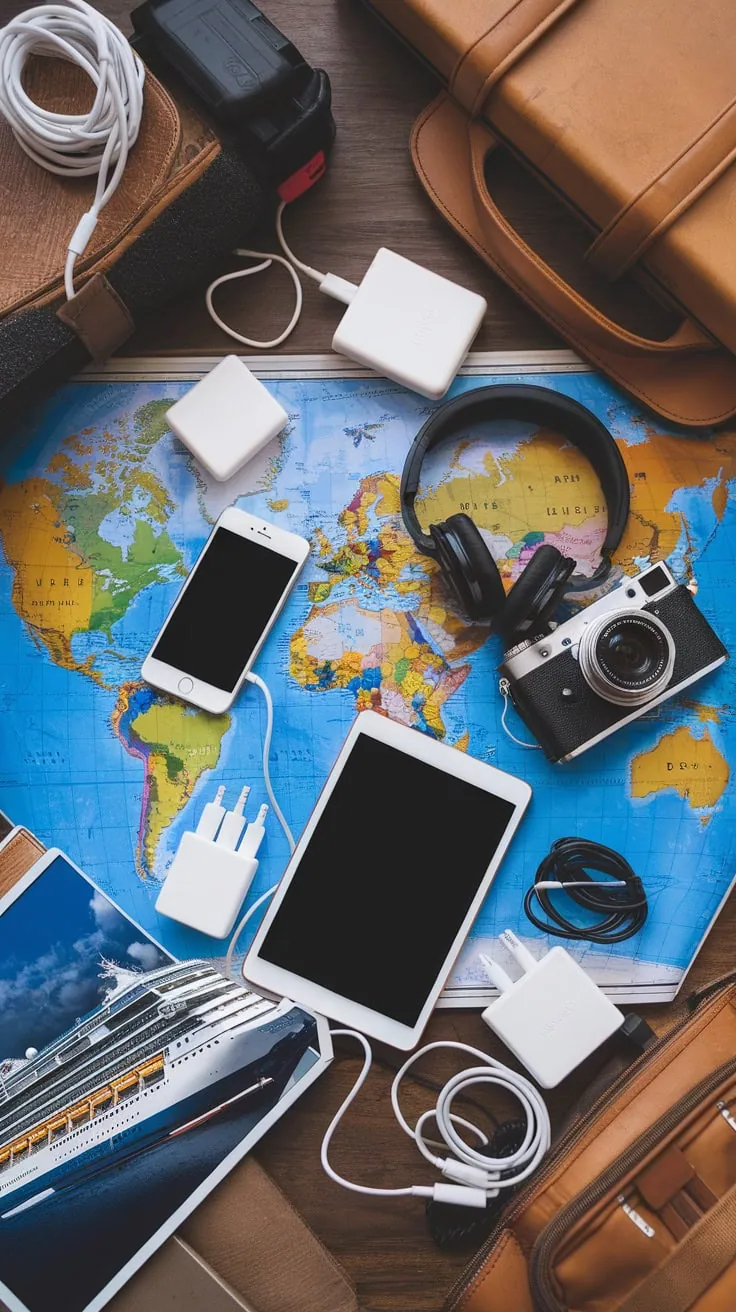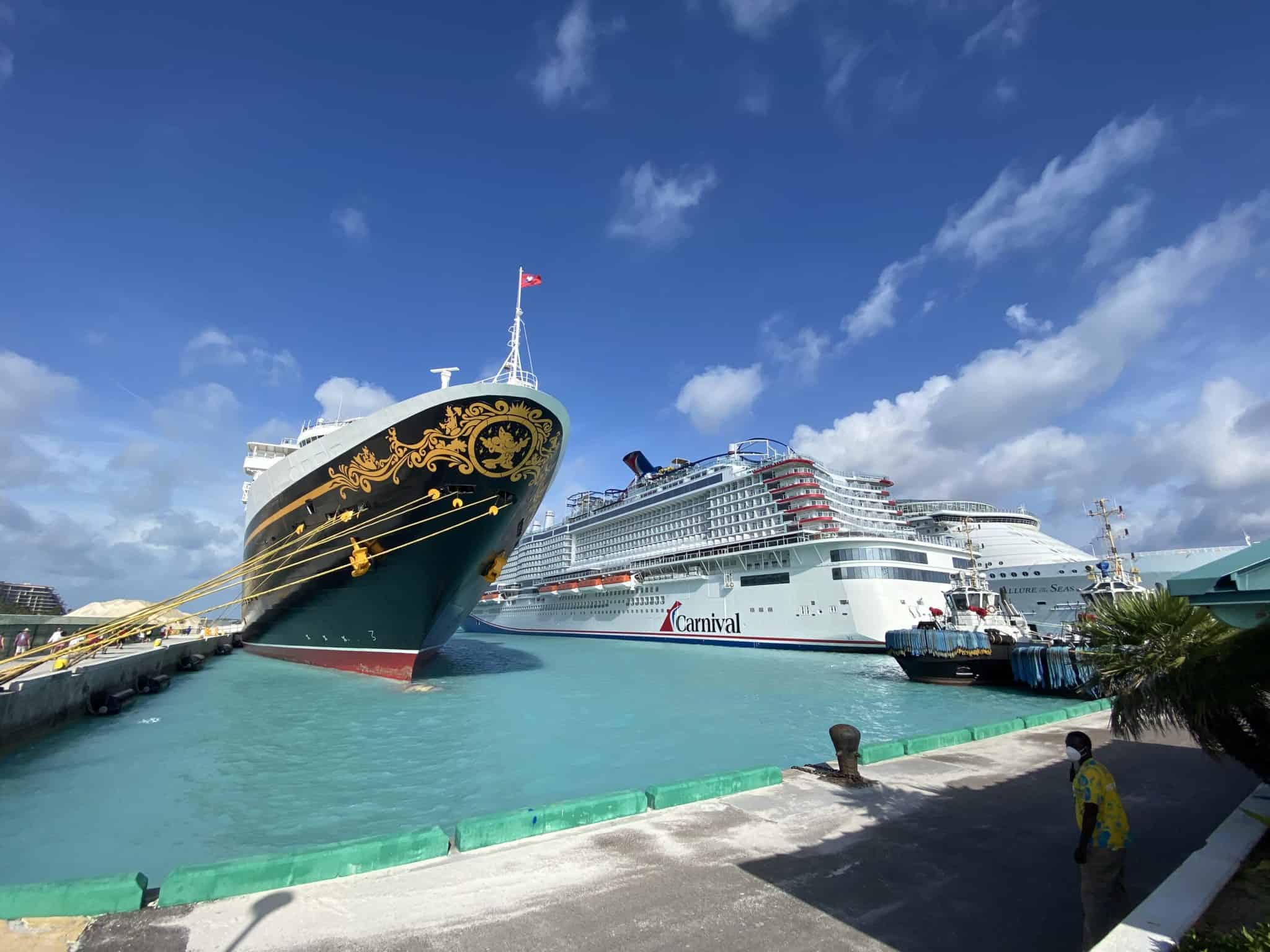Disembarkation morning is often the least favorite part of any cruise. It’s when the cruise line prepares to get you off the ship, clean your stateroom, and welcome the next batch of guests. The cruise is officially over.

Whether you want to disembark early or linger on board a bit longer, understanding the process will make your transition from ship to shore smoother.
We often say that no two ships are alike, but the procedures for disembarking on major cruise lines are usually quite similar.
While nobody likes to think about the end of their vacation before it even begins, keeping a few things in mind can make the process as quick and painless as possible when the time comes.
Cruise Ship Disembarkation Options: Express or Checked Luggage
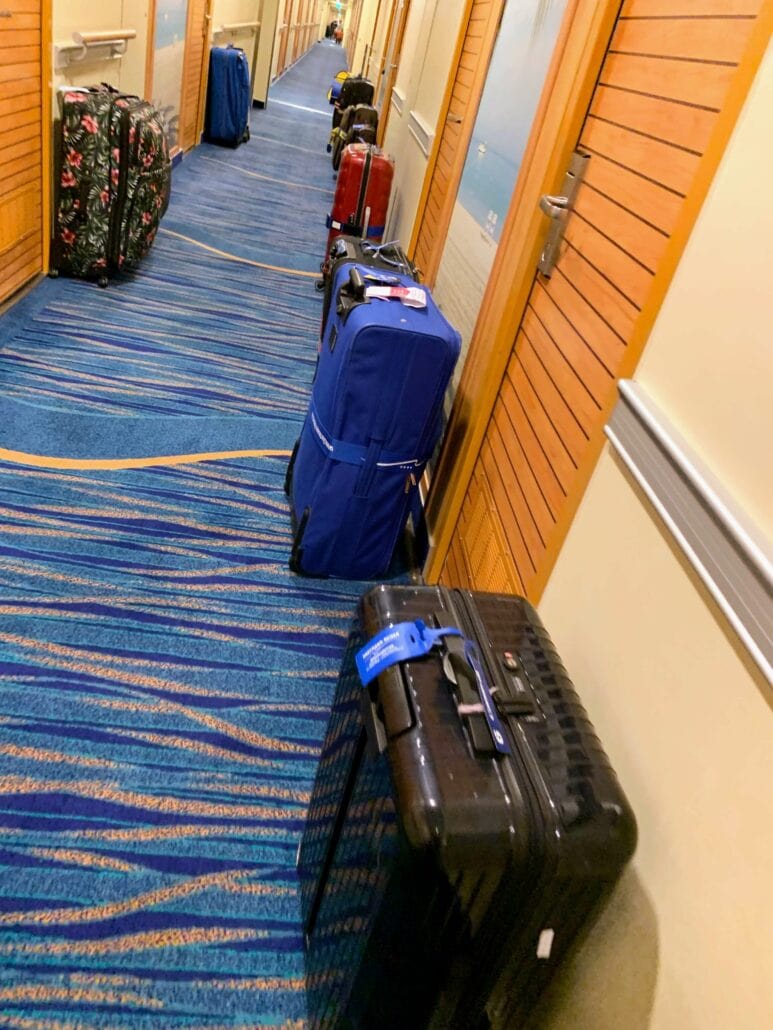
You have two main options for disembarkation: express debarkation or checked luggage debarkation. Your choice depends on how quickly you want to leave the ship.
Express Debarkation is for those who can carry all their luggage off the ship without assistance and do not need to pick up any bags afterward. This is the best option if you’ve booked an early flight or want to return to shore life as soon as possible. It’s perfect for those who don’t feel like lingering over one last breakfast.
Checked-Luggage Debarkation is a more relaxed option. You place your tagged luggage outside your stateroom the night before disembarkation, and the crew will collect it for you. After leaving the ship the next morning, you’ll claim your luggage in the terminal, similar to at an airport.
Keep important items, especially medications, in a small carry-on bag, as you won’t see your luggage until you’re off the ship.
Alternate Cruise Disembarkation Methods
Some cruise lines offer additional disembarkation options for those looking for a more customized experience:
- Luggage Valet Services: If you fly out on the same day, this service allows you to check your bags directly from your stateroom to your final destination. This can simplify the process by eliminating the need to handle your luggage after leaving the ship. Princess Cruises offered this service on our Alaska sailing over the summer.
- Private Transfers and Excursions: If you’ve booked a post-cruise excursion or private transfer, these services often include expedited disembarkation options. Check with your excursion provider for specific details. Services like private Naples-to-Rome transfers with sightseeing can turn your journey into part of the vacation.
- Staying in a Suite: Some suite-level guests, like Norwegian Cruise Line’s The Haven, Royal Caribbean’s upper-tier suites, and MSC Cruises’ Yacht Club, offer escorted debarkation through private exits.
Preparing for Disembarkation Morning
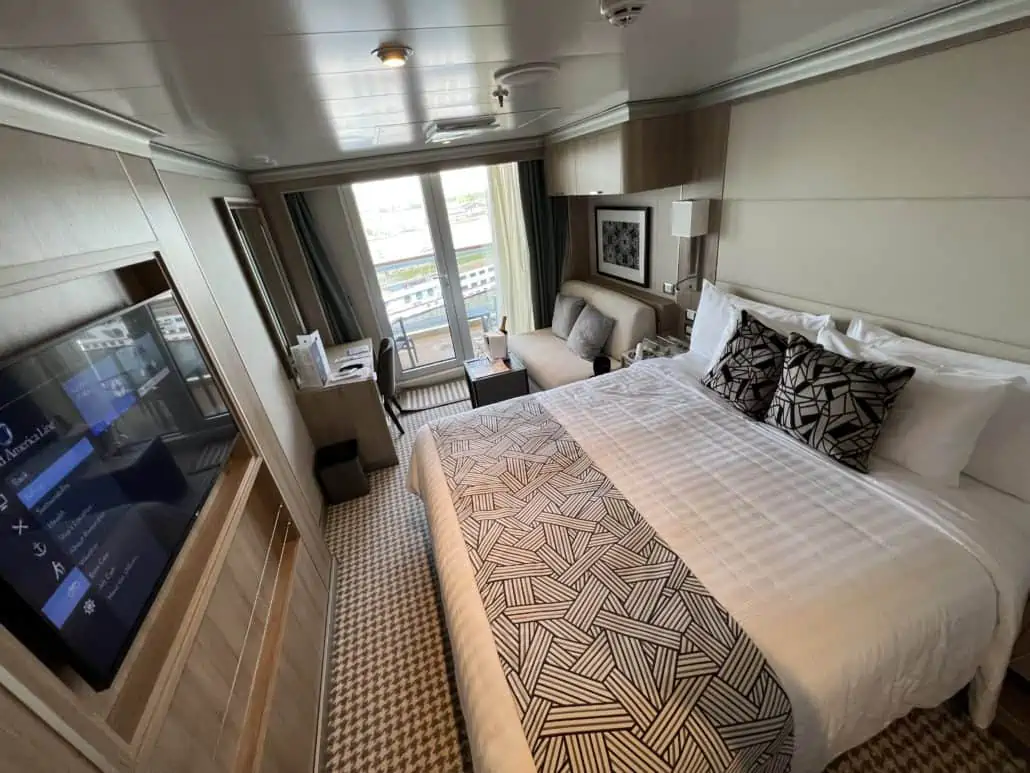
You’ll receive a letter in your stateroom explaining the disembarkation process a day or two before you reach your final port. Depending on your cruise line, disembarkation tags (color-coded and numbered) will be delivered to your stateroom or available for pick-up at Guest Services.
Guests with higher loyalty status typically have priority disembarkation.
Guests will be called to disembark by zone as soon as authorities clear the ship. To avoid chaos, don’t line up before your zone is called, and be sure to listen to announcements over the loudspeaker or from staff.
For detailed instructions, consider attending the disembarkation talk, usually held the day before in the ship’s theater or main show lounge.
Remember, even if you’ve cruised many times, each ship’s process might differ. Take a few minutes to familiarize yourself with the specific procedures for your current cruise to ensure a smooth experience.
Settling Your Onboard Account
Before you disembark, make sure to settle your onboard account. It’s a good idea to monitor your account throughout the cruise and address any discrepancies beforehand.
Long lines at Guest Services are common as passengers settle their accounts on disembarkation morning. If you’ve set up a cash account, now’s the time to pay off any remaining balance and collect any unspent money.
If you skip settling your account, you won’t be cleared to leave the ship.
Do You Need to Fill Out Immigration Forms?
Whether or not you need to fill out immigration forms depends on how much you’ve purchased during your trip. Generally, purchases over $800, or certain amounts of alcohol and tobacco, must be declared.
Most cruise ports have eliminated the blue U.S. Customs declaration form. Still, before you sail, check the paperwork in your stateroom for specific instructions or the cruise line’s website.
Remember: the cruise line and customs officials aim to make this process as efficient as possible.
Last Meal Onboard
Yes, you can enjoy one last meal before disembarkation! Many cruisers make a point of having one final “free” breakfast before leaving the ship. The daily newsletter will contain information about restaurants opening on disembarkation morning.
Typically, the buffet will be open, and at least one dining room may offer a sit-down breakfast. Some cruise lines may offer room service, though this is becoming less common.
Related: The Debark Issue I Never Saw Coming
Waiting Areas Onboard
On disembarkation morning, cruise ships designate certain public spaces for passengers to wait until their number or color is called.
These areas often include lounges, dining areas, promenades, and open decks. Avoid crowding near the disembarkation area, as it can slow the process for everyone.If you’re lucky enough to be on a back-to-back cruise, the cruise line will issue you an in-transit card.
You’ll need to disembark briefly, but you can usually reboard quickly once the passenger count is reset. However, some lines will let you stay on the ship.
Cruise Debarkation Timeline
Here’s a general timeline to help you plan for disembarkation morning:
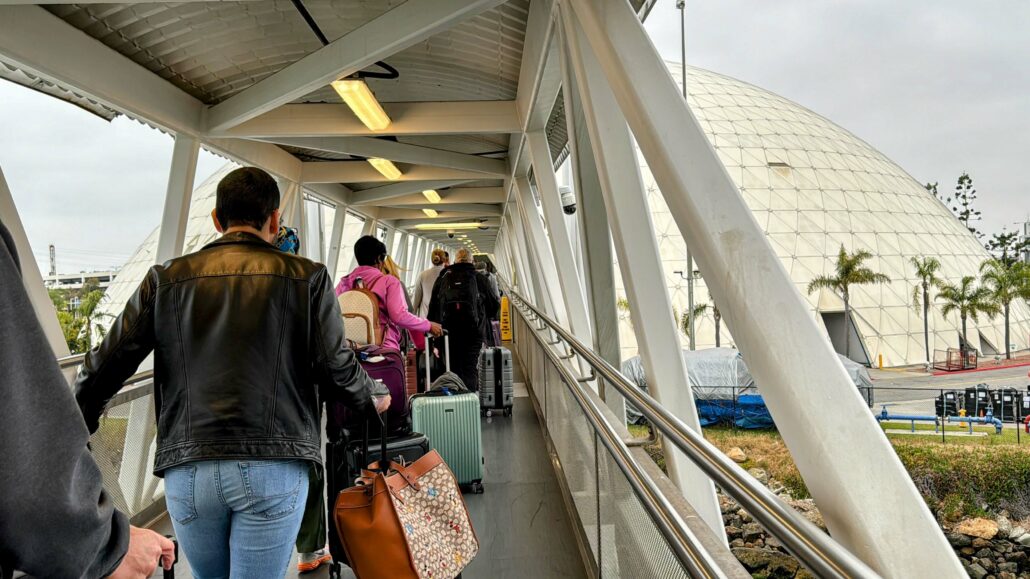
- 6:00 AM – 7:00 AM: Breakfast service begins, typically in the buffet and at least one dining room. Room service may be available on some lines, but checking the cruise line app or your daily newsletter is best.
- 7:00 AM – 8:00 AM: The ship is usually cleared by customs, and express debarkation begins. Passengers who can carry their luggage and have chosen this option will be the first to leave.
- 8:00 AM—9:30 AM: Checked-luggage disembarkation begins. Passengers are called by zone or group number to leave the ship. During this time, you can wait in designated lounges, dining rooms, or other public spaces.
- 9:30 AM—10:30 AM: The final group of passengers is called to disembark. When everyone is off, the crew will prepare the ship for the next round of guests.
- Post-10:30 AM: If you’re part of a back-to-back cruise, you’ll disembark briefly to allow the crew to reset the passenger count, then reboard once the ship is ready.
Debarkation Tips for Families and Guests with Special Needs
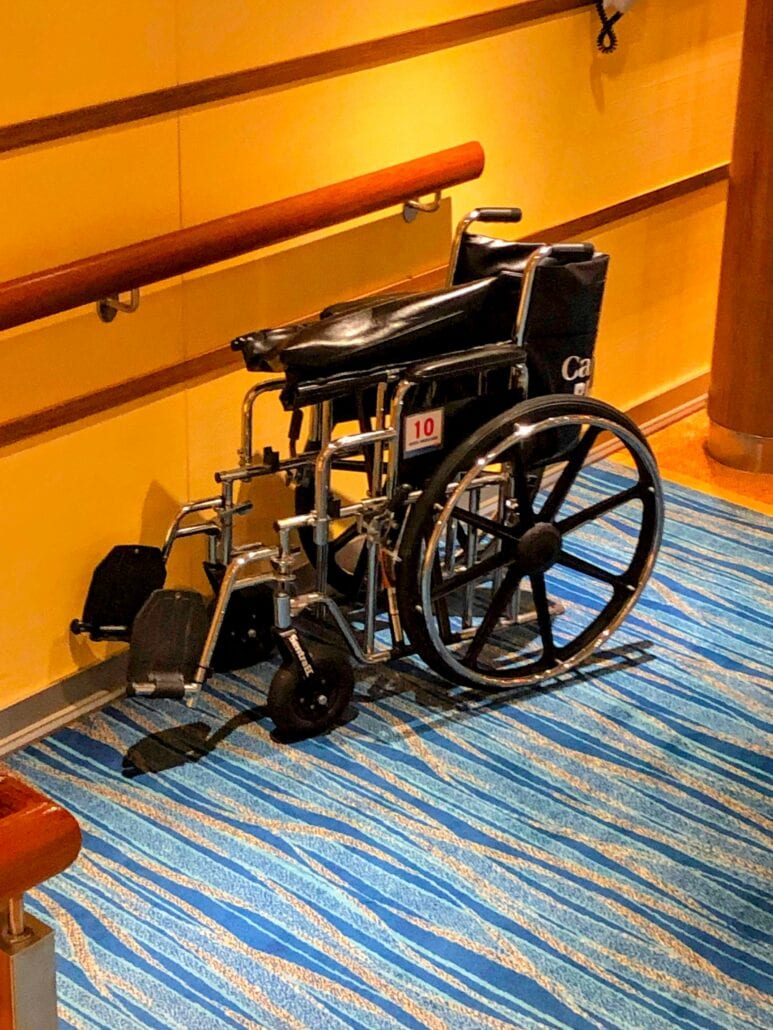
Disembarking with a family or as a guest with special needs can require more planning.
Here are some tips to help:
- Families with Young Children: If traveling with young children, consider waiting until later in the disembarkation process when the initial rush has subsided. This can make it easier to navigate crowded areas and avoid long waits. Bring snacks and activities to keep kids occupied while waiting.
- Guests with Mobility Issues or Special Needs: Many cruise lines offer special assistance for guests with mobility issues or other special needs. Be sure to inform Guest Services beforehand so they can provide any necessary accommodations, such as wheelchair assistance or priority disembarkation.
- Accessible Waiting Areas: Some ships have designated accessible waiting areas close to the disembarkation point, which can make the process more comfortable. Check with the ship’s staff to find out where these areas are located.
Can I Disembark a Cruise Early?
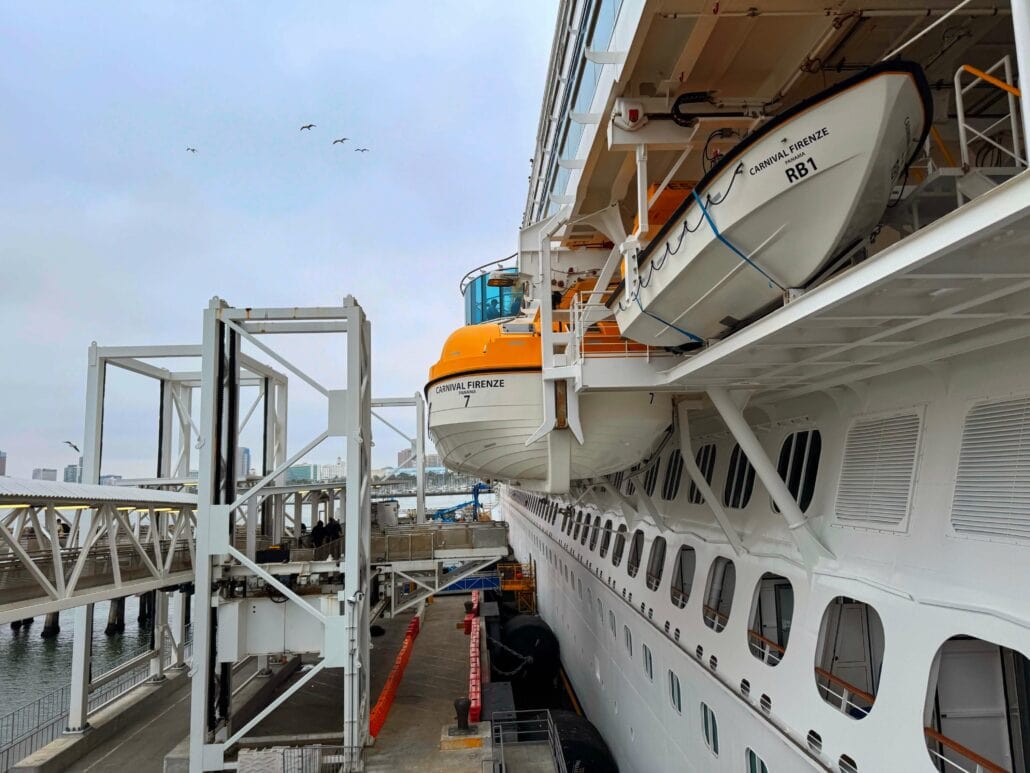
Yes, you can leave a cruise early, but it’s not as simple as deciding to leave the ship at the next port of call. Early disembarkation, often called “mid-cruise departure,” requires careful planning and approval from the cruise line and local port authorities.
There are several reasons someone might need to leave a cruise before it officially ends, such as an emergency back home, health issues, or travel arrangements that require an early departure.
Here’s what you need to know if you’re considering leaving the ship early:
- Contact Guest Services Early: If you need to disembark early, contact Guest Services immediately. They will guide the necessary steps and paperwork required. Remember, approval is needed from both the cruise line and the local port authority.
- Be Prepared for Additional Costs: Disembarking early may involve extra fees, including those for customs processing or transportation arrangements.
- Arrange Your Own Transportation: Once you disembark early, you are responsible for arranging your transportation from the port. This could mean booking a flight, arranging a taxi, or finding other means to reach your destination. It’s important to plan and ensure you have everything lined up.
- Customs and Immigration Considerations: You’ll need to go through customs and immigration if you leave the cruise early. This can be more complicated than at the end of the cruise, especially if you’re in a foreign port. Ensure you have all necessary travel documents, including your passport, visa (if required), and any forms the cruise line provides.
- Insurance and Refund Policies: Before leaving the cruise early, check your travel insurance policy and the cruise line’s refund policies.
- Emergency Situations: If you need to leave the cruise due to a medical emergency or other urgent situation, the cruise line staff and medical team will assist you in coordinating the disembarkation process.
Related: Carnival Venezia — Everything You Need to Know Before Cruising
Early disembarkation is uncommon and requires careful coordination to ensure a smooth departure. If you know in advance that you might need to leave early, communicate with the cruise line as soon as possible to make the necessary arrangements and understand any potential challenges.
How Long Does It Take to Disembark at a Cruise Port?

If you’re wondering how long it takes to get off the ship when visiting a port of call, it varies depending on several factors, such as the size of the ship, the port facilities, and whether the ship is docked or anchored offshore. Typically, disembarking at a port can take anywhere from 15 minutes to over an hour.
- Docked Ports: If the ship is docked, you can usually walk off it as soon as local authorities clear it. This process is generally quicker, with passengers often able to disembark within 15-30 minutes.
- Tender Ports: Tender boats transport passengers to the shore when the ship is anchored offshore. This can take longer, especially if the weather is rough or you must wait for a tender. Plan for up to an hour or more in such cases.
Cruise Disembarkation Tips and Tricks
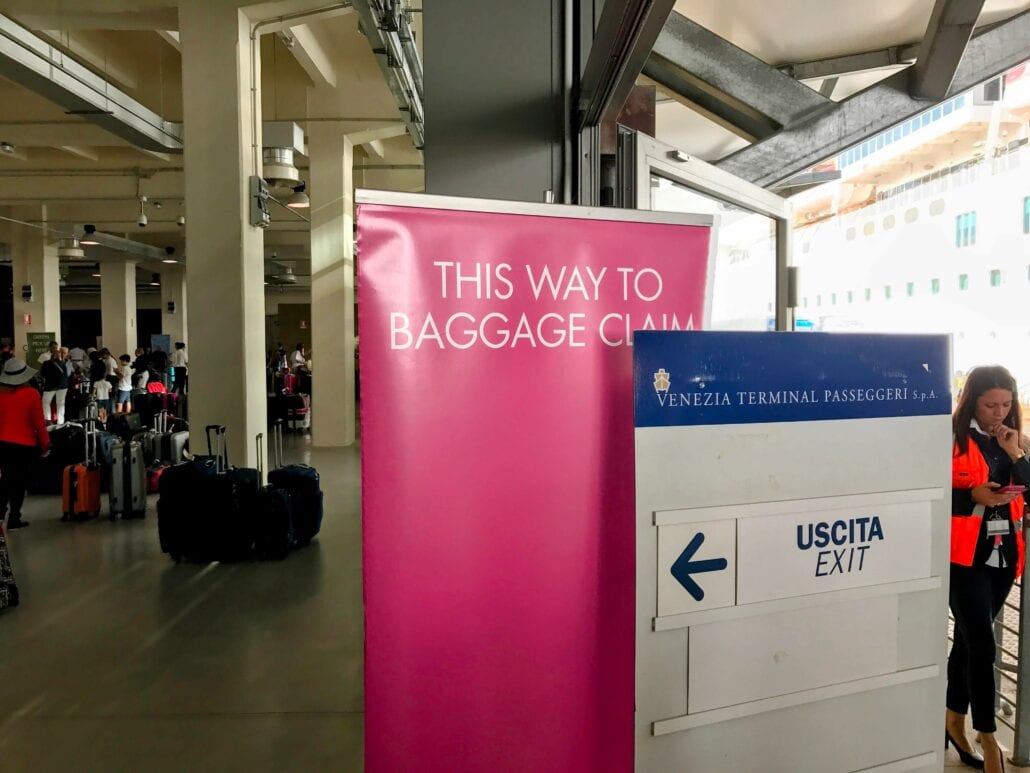
- Early Flights: If you have an early flight, choose express cruise ship disembarkation to avoid delays. Always allow extra time, as unexpected delays can lead to missed flights.
- Porter Service: If you opt for checked luggage disembarkation, consider using a porter service to transport your bags to the curb or car. Porters often have a dedicated customs line, speeding up the process. It’s customary to tip a dollar or two per bag.
- Keep Your Paperwork Handy: You’ll need to show your sail card when getting off the ship for the final time and your passport or birth certificate several times between the gangway and the customs area, so keep it easily accessible.
